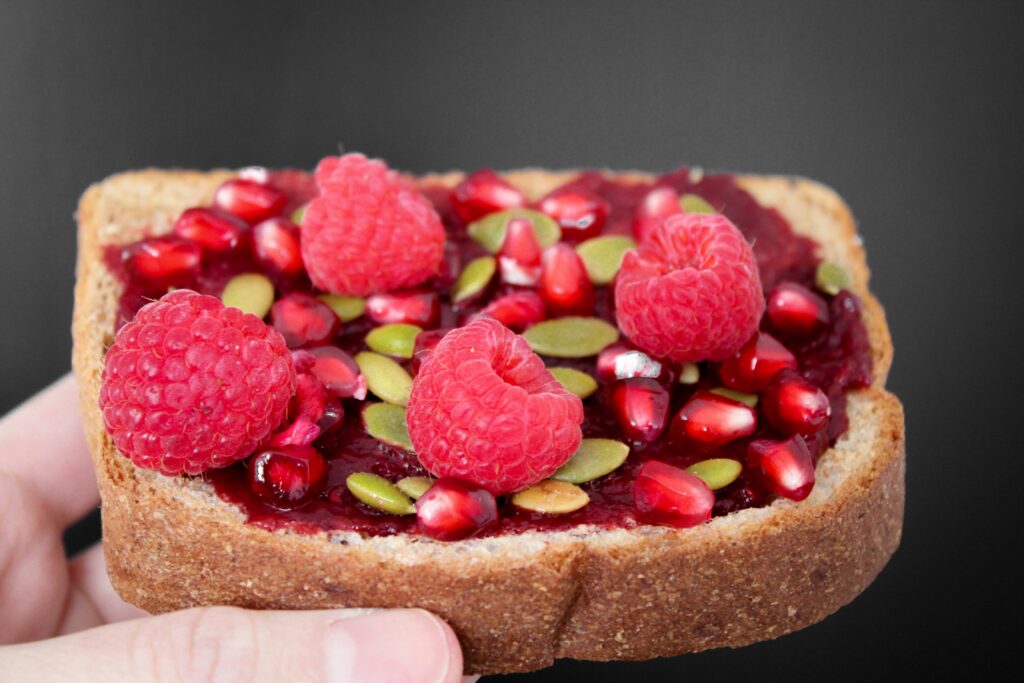As people age, the body’s ability to metabolize certain compounds changes, often resulting in higher uric acid levels in the blood. Left unmanaged, these elevated uric acid levels can lead to gout, kidney stones, and other health issues, particularly in older adults. Fortunately, there are effective ways to address high uric acid levels through diet and lifestyle changes. Let’s dive into why uric acid levels rise and explore nutritional and lifestyle strategies to manage and prevent these elevations naturally.
What is Uric Acid and Why Does it Matter?
Uric acid is a waste product formed when the body breaks down purines, which are substances found in certain foods and also produced by the body. While uric acid usually dissolves in the blood, travels to the kidneys, and leaves the body through urine, high levels can accumulate in the blood, leading to a condition called hyperuricemia.
Excessive uric acid can crystallize and settle in the joints, causing pain and inflammation characteristic of gout, or it may form kidney stones, leading to further complications.
Common Causes of High Uric Acid Levels
- Dietary Choices: Foods high in purines (such as red meat, shellfish, and alcohol) can increase uric acid levels. Sugary foods and beverages, particularly those containing fructose, can also play a role.
- Dehydration: Insufficient hydration makes it harder for kidneys to eliminate uric acid efficiently, potentially causing it to build up in the blood.
- Reduced Kidney Function: With age, kidney function often declines, making it more difficult for the body to excrete excess uric acid.
- Sedentary Lifestyle and Obesity: A sedentary lifestyle and increased body weight are often associated with higher uric acid levels, due to an increased production and decreased excretion of uric acid.
- Genetics: Some people are genetically predisposed to have higher levels of uric acid, making them more susceptible to hyperuricemia and gout.
Symptoms of Elevated Uric Acid Levels
Most people with high uric acid levels do not experience symptoms, but once levels get too high, symptoms can include:
- Sharp pain, redness, and swelling in the joints (commonly in the big toe)
- Joint stiffness and limited range of motion
- Formation of kidney stones, causing pain in the lower back or abdomen
Nutritional Strategies for Managing Uric Acid Levels
1. Limit High-Purine Foods
Foods rich in purines increase uric acid production. Limiting or avoiding these foods can help reduce levels:
- Red and Organ Meats: Beef, pork, and organ meats (liver, kidneys) have high purine content.
- Seafood: Shellfish (like shrimp and lobster), sardines, anchovies, and trout contain high purine levels.
- Certain Vegetables: While vegetables like spinach, cauliflower, and asparagus contain purines, their effect on uric acid levels is less significant compared to meats and seafood, and they are generally safe in moderation.
2. Choose Low-Purine, Uric-Acid Friendly Foods
Opting for low-purine foods can be a proactive way to manage uric acid:
- Dairy Products: Low-fat milk, cheese, and yogurt may lower uric acid levels.
- Complex Carbohydrates: Whole grains, fruits, and vegetables are naturally low in purines and provide fiber, which helps with weight management.
- Vegetable Proteins: Lentils, beans, and other legumes are lower-purine alternatives to animal proteins.
3. Stay Hydrated
Adequate hydration helps the kidneys flush out uric acid. Aim for at least 8 glasses of water daily, and more if you’re physically active. Herbal teas and water-rich fruits (like cucumber, watermelon, and oranges) also contribute to hydration.
4. Limit Fructose and Sugary Drinks
Fructose, a type of sugar found in many sweetened drinks and foods, can increase uric acid production. Studies show that people who consume high amounts of fructose, often through sodas and fruit juices, are more likely to have elevated uric acid levels. Cutting back on these beverages and opting for naturally sweet, whole fruits instead can make a significant difference.
5. Reduce Alcohol Consumption
Beer and other alcoholic beverages are high in purines and increase uric acid levels. Beer, in particular, has a substantial impact due to its purine content and other compounds that inhibit uric acid excretion. Wine may be a more moderate choice, but it’s still best to limit alcohol intake, especially during periods of elevated uric acid.



Lifestyle Changes to Support Uric Acid Reduction
1. Incorporate Regular Exercise
Physical activity can help maintain a healthy weight, which is essential for managing uric acid. Obesity is associated with higher uric acid levels and gout risk, so focusing on gentle but regular exercises like walking, swimming, or yoga can help keep your levels in check without putting excessive strain on your joints.
2. Maintain a Healthy Weight
Studies indicate that weight loss in overweight individuals can significantly reduce uric acid levels. However, it’s important to lose weight gradually, as rapid weight loss or extreme dieting can temporarily increase uric acid levels. A balanced diet with a modest calorie deficit and regular physical activity is a sustainable approach to weight management.
3. Avoid Fasting or Skipping Meals
While maintaining a healthy weight is beneficial, fasting or extreme dieting can lead to a breakdown of body tissues, which releases purines and increases uric acid levels. Aim for balanced meals at regular intervals, including a variety of nutrients to stabilize energy levels and reduce hunger-driven cravings.
4. Manage Stress Levels
Chronic stress can exacerbate inflammation in the body, potentially worsening symptoms of high uric acid like gout. Incorporating stress management techniques like meditation, deep breathing exercises, or even short, mindful walks can help improve overall well-being and reduce uric acid levels.
Sample Diet Plan to Help Lower Uric Acid Levels
Breakfast
- Option 1: Smoothie Bowl
- Blend low-fat yogurt, a handful of berries (blueberries, strawberries), and a banana. Top with chia seeds, a sprinkle of oats, and a few sliced almonds.
- Beverage: Green tea or a glass of water with lemon.
- Option 2: Whole-Grain Toast with Avocado & Fruit
- Two slices of whole-grain toast topped with mashed avocado and a sprinkle of black pepper. Pair with a side of watermelon or apple slices.
- Beverage: Herbal tea or lemon water.
3. Option 3 : Oatmeal
a. Oatmeal with low-fat milk, topped with berries and a sprinkle of flaxseeds
b. A glass of water with a lemon slice (lemon is alkalizing and may help reduce uric acid)
Mid-Morning Snack
- Option 1: Mixed Nuts and Berries
A small handful of unsalted nuts (such as almonds or walnuts) with a handful of blueberries or strawberries.
- Option 2: Carrot & Cucumber Sticks with Hummus
Fresh carrot and cucumber sticks dipped in hummus. This snack provides fiber and hydration.
3. Option 3: Apple with handful of walnuts
Lunch
- Option 1: Grilled Vegetable & Chickpea Salad
Mixed leafy greens with grilled zucchini, bell peppers, cherry tomatoes, and 1/2 cup of chickpeas. Drizzle with olive oil and balsamic vinegar, and sprinkle with pumpkin seeds.
Beverage: Water with a slice of lemon.
- Option 2: Quinoa Bowl with Steamed Vegetables
1/2 cup of cooked quinoa topped with lightly steamed broccoli, cauliflower, and carrots. Add a sprinkle of sunflower seeds and a small dollop of plain Greek yogurt on the side for protein.
Beverage: Herbal tea or water with cucumber slices.
Afternoon Snack
- Option 1: Fresh Pear with Cottage Cheese
One sliced pear with a small serving of low-fat cottage cheese, providing protein and fiber.
- Option 2: Whole-Grain Crackers with Nut Butter
3–4 whole-grain crackers topped with almond or peanut butter (unsweetened) for a protein-rich snack.
3. Option 3: Carrot and Celery sticks with hummus.
Dinner
- Option 1: Baked Salmon with Sweet Potato and Steamed Spinach
- 3 oz of baked salmon (rich in omega-3s and anti-inflammatory properties), half a sweet potato, and a side of steamed spinach. Drizzle with a bit of olive oil and a squeeze of lemon.
- Beverage: Water with mint leaves.
(Note: Salmon is low to moderate in purines, but generally fine in small portions. If gout flare-ups are frequent, replace salmon with tofu or white fish, like cod, which is lower in purines.)
- Option 2: Stir-Fried Tofu and Vegetables with Brown Rice
A serving of tofu stir-fried with vegetables like bell peppers, zucchini, and snap peas. Serve over a half-cup of brown rice for added fiber.
Beverage: Warm chamomile tea or water with lemon.
3. Option 3: Grilled chicken breast with steamed broccoli and brown rice
A side of mixed green salad with olive oil dressing
Evening Snack (Optional)
- Option 1: Low-Fat Greek Yogurt with Chia Seeds
- A small bowl of plain, low-fat Greek yogurt with a teaspoon of chia seeds and a sprinkle of cinnamon for a touch of flavor.
- Option 2: Celery Sticks with Cottage Cheese
- Celery sticks dipped in a small portion of low-fat cottage cheese.
Additional Tips for Managing Uric Acid:
- Hydrate: Drinking water throughout the day aids kidney function, helping to flush out uric acid.
- Limit Fructose & Sugary Foods: Avoid high-fructose corn syrup (often found in sodas and candies) as it can increase uric acid production.
- Balance Protein Sources: Focus on plant-based proteins (like beans, lentils, and tofu) and low-purine animal sources, like eggs and low-fat dairy.
- Consider Probiotics: Foods with natural probiotics, like yogurt and kefir, may support digestive health, which is beneficial for managing inflammation.
Final Thoughts: Adopting a Balanced, Uric-Acid Friendly Lifestyle
Elevated uric acid levels don’t have to compromise quality of life. By making dietary adjustments, staying active, and keeping well-hydrated, it’s possible to manage uric acid levels naturally. As with any health condition, these changes can be best implemented with the support of a healthcare provider or a nutritionist to ensure they fit with your unique health profile.
Always check with your doctor before starting a new diet plan and medicine . It’s safe to start a new regime under the supervision of an expert.
Please note that some of the links in this post are affiliate links. This means that if you click on the link and purchase the item, I will receive a small commission at no additional cost to you. As an Amazon Associate, I earn from qualifying purchases. I only recommend products and services that I believe will add value to my readers. Thank you for your support!




